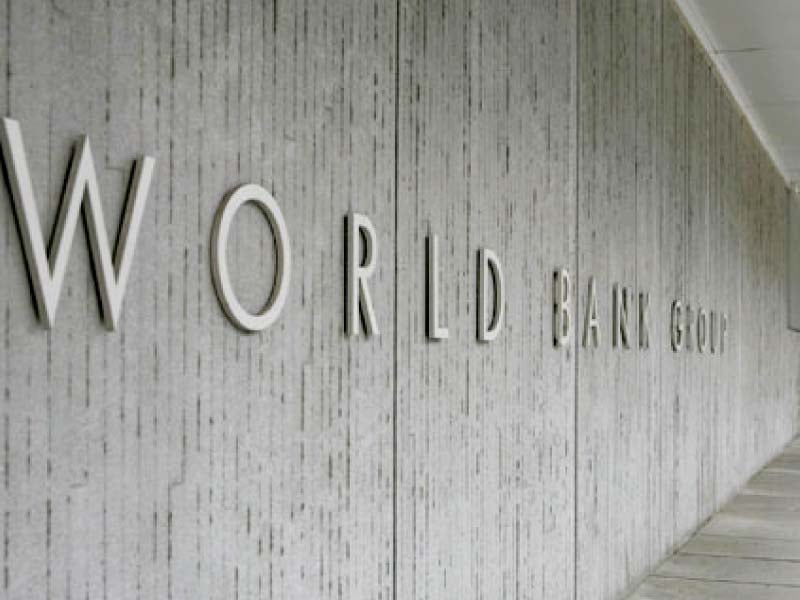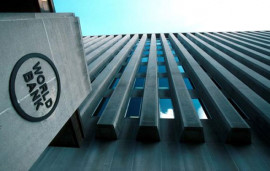
KARACHI: The World Bank has projected Pakistan’s economy to grow at 5% in the ongoing fiscal year, which means that the country will miss the government-set target of 5.4%.
The Washington-based lender added that the country’s economy could see a growth of 5.4% in FY18 on the back of continued mushroom growth in the services sector, recovery of agriculture and uptick in infrastructure investment.
“The services sector, which comprises more than half of the economy, is expected to be the primary source of growth,” stated the World Bank report on ‘Pakistan Development Update - Making growth matter’ that was launched in Karachi on Thursday.
Pakistan rated among top emerging economies
The (services) sector is expected to grow by 5.6% in FY17. After a lean performance in FY16, the agriculture sector is expected to recover sufficiently to grow at 2.7% in FY17, while industrial sector is forecast to grow at 5.7%, the report added.
On the demand side, growth is expected to be primarily driven by public and private consumption, supported somewhat by a moderate increase in investment. “The investment-to-GDP ratio would increase to 14.4% in FY17 and 14.6% in FY18 from 14% in last two years,” said the bank.
The low investment-to-GDP ratio is expected to increase due to infrastructure projects under China-Pakistan Economic Corridor (CPEC) and other public investment. “These projects, if delivered on schedule, are expected to accelerate growth in the domestic construction industry and expand electricity generation. Improved electricity availability would, in turn, support growth in industry and services sectors,” it said.
Speaking at the launch of the report, World Bank Country Director for Pakistan, Patchamuthu Illangovan, stressed the need for increased investment in social sectors like health, education and nutrition. “All this would lead to a vibrant and dynamic society as well as the economy,” he said.
 ILLUSTRATION: NABEEL AHMED
ILLUSTRATION: NABEEL AHMEDWorld Bank Lead Country Economist, Enrique Blanco Armas, added that “growth will depend on structural reforms, CPEC implementation and investment in health and education.”
Low exports, malnutrition concerns
He, however, showed great concern over the continuously falling exports of the country. “Pakistan’s exports have continued to decline in the last 10 years compared to Bangladesh’s exports that grew.”
Consumer confidence declines in Pakistan
Low exports may lead to a widening current account deficit to 1.7% of GDP in FY17 from 1.1% in FY16, he said.
More importantly, malnutrition is a particular concern of the World Bank that has “worsen over the last 20 years,” he said.
The report said Pakistan has the third-highest rate (43.7%) of stunting in the world. Despite economic growth, and unlike its regional peers, it has made no progress on nutrition indicators in recent decades.
Consumption-led growth
It added that the country’s economy grew by 4.7% in FY16. “This was the highest rate in eight years and a significant increase from the previous year’s 4%.
“The growth was driven by consumption,” Armas said.
The report added consumption accounted for an overwhelming 92% of GDP in FY16, and contributed 7 percentage points towards GDP growth (moderated by a negative contribution of 2.2% from net exports), supported by sustain growth in remittances.
Sindh’s demand
Meanwhile, Sindh Chief Minister Syed Murad Ali Shah, who was present during the launch of the report, urged the federal government to transfer more resources to the provinces under the National Financial Commission so that they could spend more on social sectors like health and education.
Karachi’s outlook
Meanwhile, Karachi continues to remain among the bottom 10 cities in the 2015 Global Livability Index. The World Bank report, which dedicated an entire chapter to the provincial capital, stated that Karachi’s security and livability are under threat from regional conflicts in northwest Pakistan and Afghanistan, organised crime linked to drug- and arms-trade, and social and ethnic tensions stemming from multiple waves of immigration, the report said.
Although it is the country’s economic hub and a strong industrial base, yet its infrastructure and institutions have failed to keep pace with its physical growth, it added.
Pakistan's economy is out of danger, says IMF chief
Karachi is prone to natural disasters; floods, earthquakes, tsunamis, cyclones, water scarcity, heat waves and fires. It is one of the vulnerable divisions in Pakistan, the report said.
The residences are also prone to diseases linked to environmental pollution mainly deriving from burning industrial waste and discharging untreated liquid waste, it said.
The city is also experiencing a water and sewerage crisis that stems largely from governance shortfalls. Neither Karachi nor Sindh province have a formal policy for water supply and sanitation, it added.
Published in The Express Tribune, November 11th, 2016.
Like Business on Facebook, follow @TribuneBiz on Twitter to stay informed and join in the conversation.


































































COMMENTS
Comments are moderated and generally will be posted if they are on-topic and not abusive.
For more information, please see our Comments FAQ